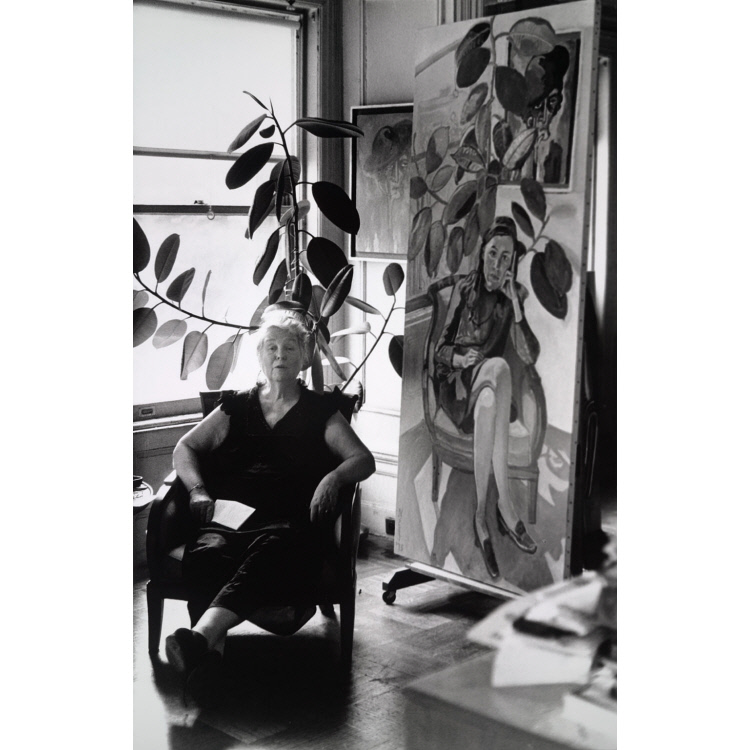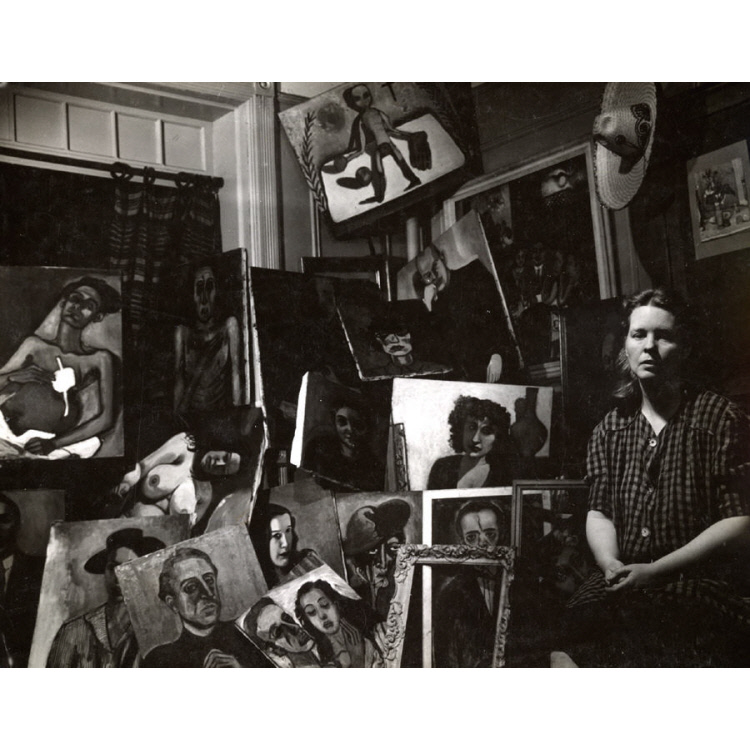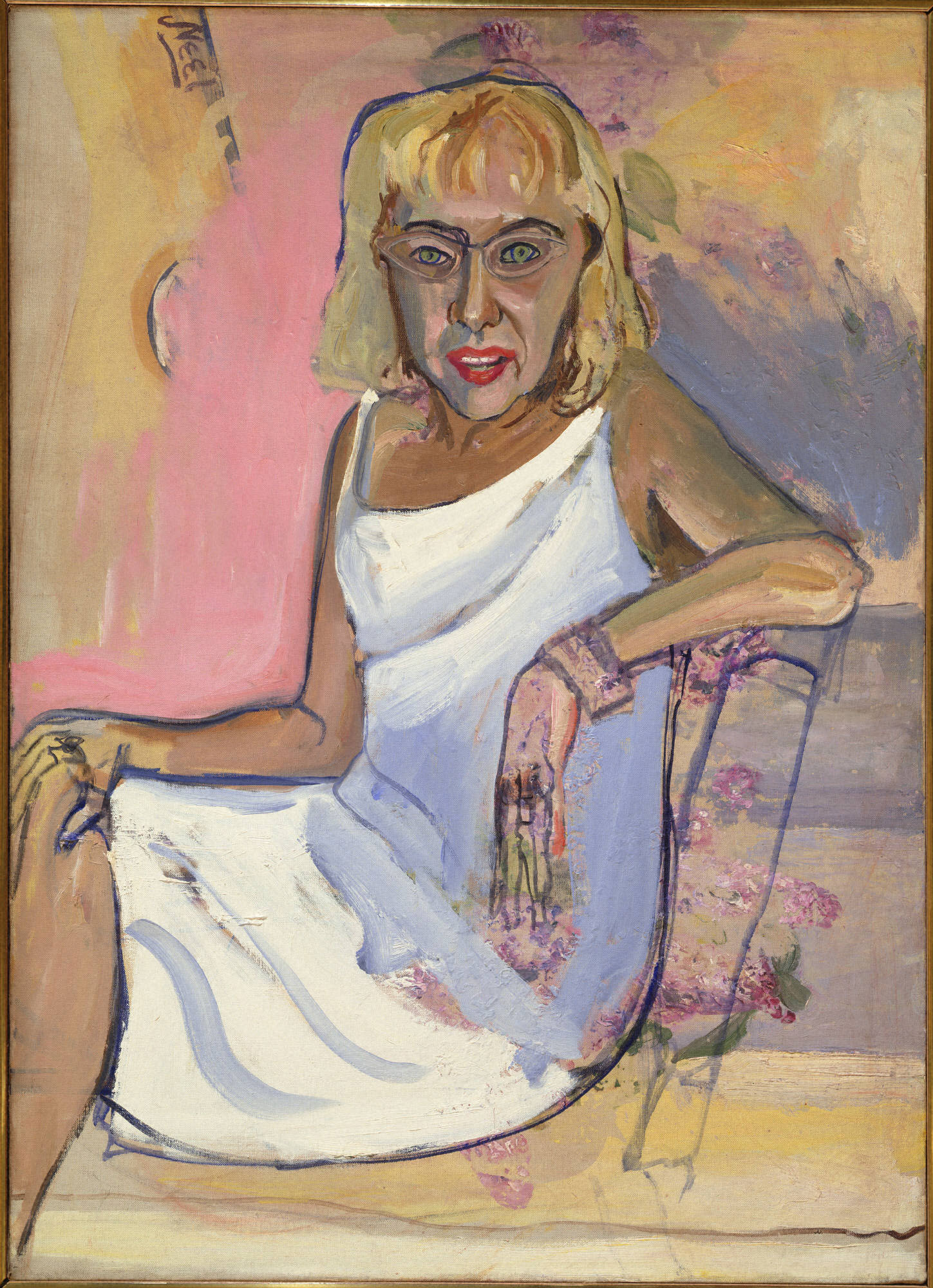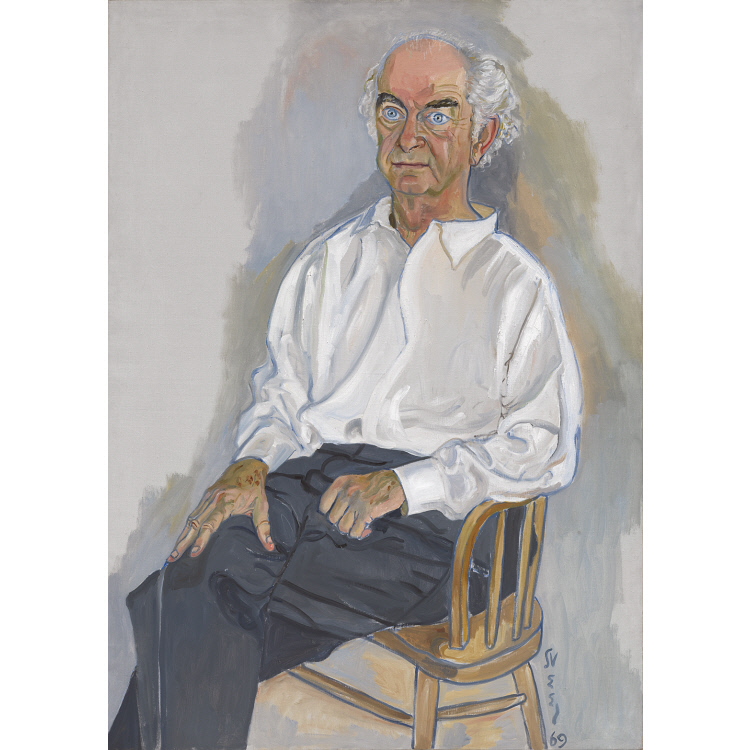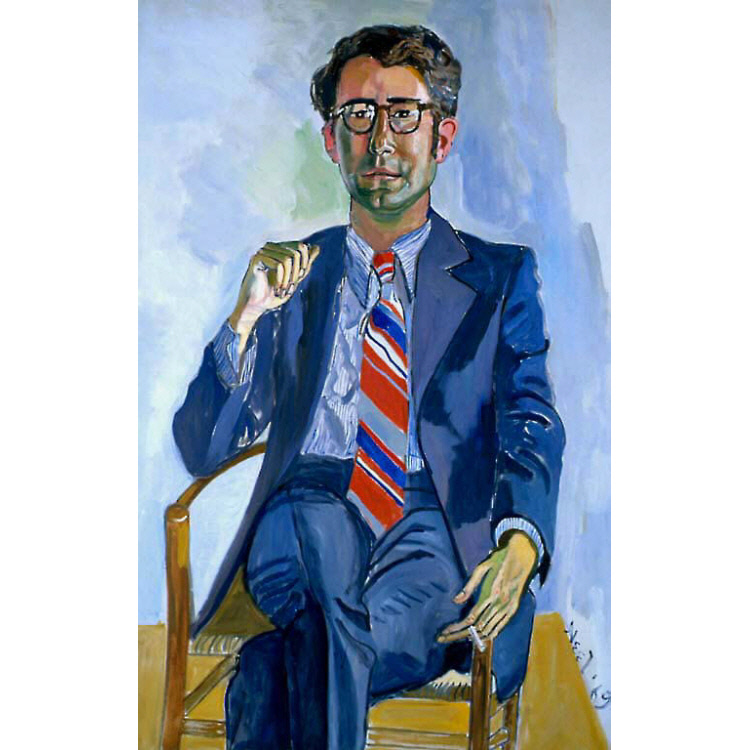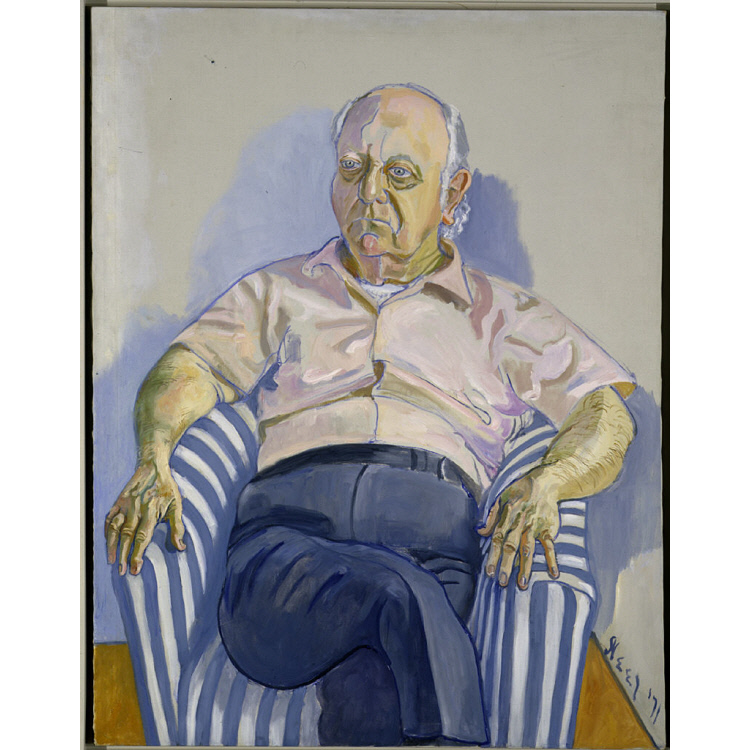Alice Neel
Alice Neel's artwork was largely overlooked for the first forty years of her career. When other artists were working with abstraction, Neel was painting regular people—pregnant nudes, social outsiders, and family members. She often depicted people she encountered on the street and once even convinced a door-to-door salesman to pose for a portrait. She talked to her sitters while she painted, attempting to reveal the sitter's inner self, or what she described as their "psychological truths." Neel tried to "capture the zeitgeist, the spirit of the day" in her work and lived what many would consider a bohemian lifestyle. She had numerous lovers, several children by different men, and lived in Spanish Harlem in New York City. Her work garnered more recognition in the late 1960s with the rise of the feminist movement and the returning popularity of figurative artwork. Around this time, Neel began to paint well-known figures such as Andy Warhol, had several solo exhibitions, and received the first National Women's Caucus for Art Lifetime Achievement award in 1979. Despite her growing popularity, she maintained her unconventional approach to life and work, finishing a nude self-portrait at the age of eighty. Neel continued to paint until her death in 1984. ("Alice Neel and the Human Comedy," ARTnews, October 1984; "Alice Neel: 'I have this obsession with life,'"ARTnews, January 1974
Objects at Smithsonian American Art Museum (1)
Objects at Princeton University Art Museum (2)
Objects at Archives of American Art (3)

